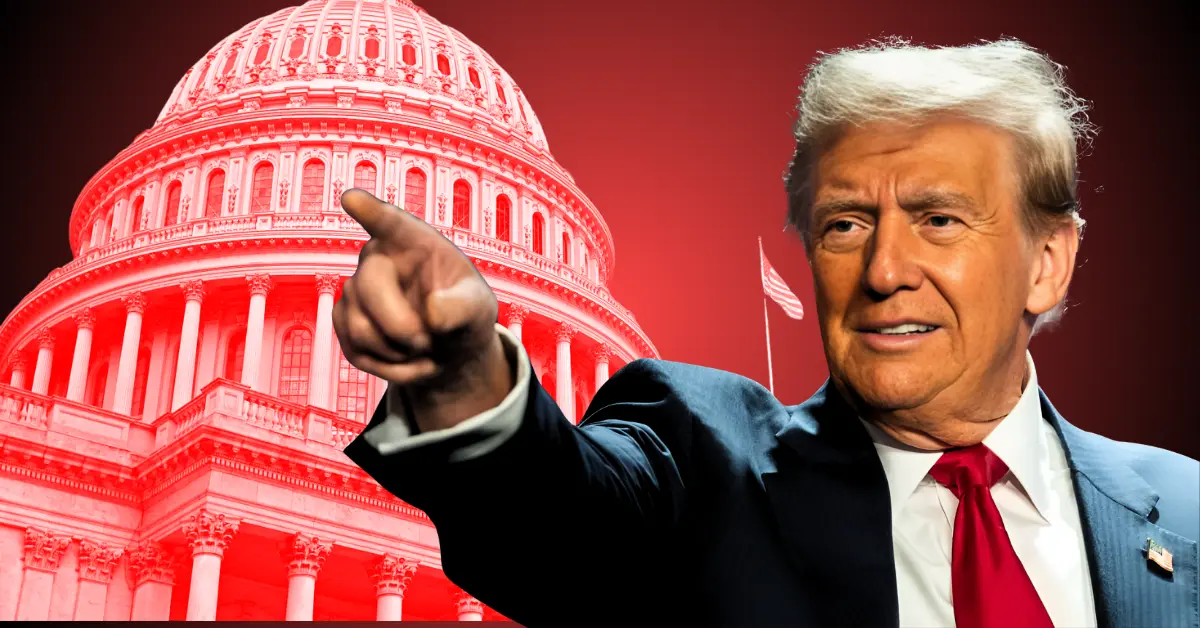The “One Big Beautiful Bill Act” of 2025 has ignited a political firestorm in the United States, reflecting the deep ideological divides that characterize contemporary American politics. This sweeping legislation, championed by President Donald Trump, represents a bold attempt to reshape the nation’s economic and social policies. However, its narrow passage in the Senate and the intense opposition it has garnered underscore the challenges of enacting transformative legislation in a polarized political climate.
The “One Big Beautiful Bill Act” is a comprehensive package that extends tax cuts, increases spending in key areas, and introduces significant policy changes. The bill’s tax provisions are particularly contentious, as they primarily benefit corporations and high-income earners. These tax cuts, which were initially set to expire, are now extended through at least 2028. Proponents argue that these cuts will stimulate economic growth and job creation, while critics contend that they will exacerbate income inequality and increase the national debt.
In addition to tax cuts, the bill allocates substantial funds to border security, defense, and energy production. This includes funding for the construction of additional border walls, the modernization of military equipment, and investments in both renewable energy sources and fossil fuel infrastructure. These provisions reflect the Trump administration’s priorities and campaign promises, but they have also drawn criticism from opponents who argue that the bill’s spending increases are unsustainable and will further strain the nation’s finances.
One of the most controversial aspects of the “One Big Beautiful Bill Act” is its proposed cuts to healthcare and nutrition programs. These cuts are intended to partially offset the costs of the tax cuts and spending increases, but they have sparked intense debate. Critics argue that these cuts will undermine crucial social programs and disproportionately affect vulnerable populations. Supporters, on the other hand, contend that the cuts are necessary to ensure fiscal responsibility and prevent the national debt from spiraling out of control.
The Senate vote on the “One Big Beautiful Bill Act” was a dramatic and contentious affair. The bill faced staunch opposition from Senate Democrats, who employed various tactics to delay the vote, including demanding that the 940-page bill be read aloud in its entirety. Senator Chuck Schumer, the Minority Leader, criticized Republicans for supporting the bill out of fear of President Trump, referencing Senator Murkowski’s earlier comments about GOP lawmakers being afraid to cross the president.
Despite holding a majority in the Senate, Republicans faced internal dissent. Securing the necessary votes required intense negotiations and concessions. Senator Lisa Murkowski initially opposed the bill but ultimately flipped her vote, providing the final commitment needed for passage. This underscores the complex political dynamics within the Republican party and the challenges of uniting different factions behind a single piece of legislation.
The tie-breaking vote cast by Vice President JD Vance solidified the bill’s passage, highlighting the crucial role of the Vice President in breaking legislative gridlock. However, the narrow 51-50 vote underscores the intense partisan battles surrounding the bill and raises questions about its future prospects in the House of Representatives.
The Senate’s passage of the “One Big Beautiful Bill Act” has elicited strong reactions from across the political spectrum. The Trump administration hailed the bill’s passage as a “resounding victory” for American workers, farmers, and small businesses. They emphasized the potential for economic growth and job creation. Democrats, on the other hand, condemned the bill as a giveaway to the wealthy and a threat to essential social programs. They vowed to continue fighting against its enactment in the House.
Economists and analysts have offered mixed assessments of the bill’s potential impact. Supporters argue that the tax cuts will stimulate economic activity and investment, while critics warn that they will exacerbate income inequality and increase the national debt. The market response to the Senate’s passage of the bill has been cautious optimism, with some sectors, such as energy and defense, expected to benefit from the increased spending. However, the overall impact on the market remains uncertain.
Following its passage in the Senate, the “One Big Beautiful Bill Act” now faces a crucial test in the House of Representatives. Speaker Mike Johnson faces the challenge of uniting his party behind the bill, as divisions exist within the House Republican caucus. The House may propose amendments to the bill, which would require further negotiations with the Senate. The Trump administration has expressed a desire to have the bill passed by July 4th, adding pressure on lawmakers to act quickly.
Adding a layer of complexity to the political landscape, a public feud erupted between President Trump and tech mogul Elon Musk. This dispute reportedly stemmed from Trump’s concerns about Musk’s subsidies and Musk’s criticism of the “One Big Beautiful Bill Act.” The feud underscores the growing tensions between the tech industry and the Trump administration and could potentially influence the bill’s prospects in the House.
The “One Big Beautiful Bill Act” represents a pivotal moment in American politics. Its narrow passage in the Senate highlights the deep divisions within the country and the challenges of governing in a polarized environment. Whether the bill will ultimately become law remains to be seen, as it faces significant hurdles in the House of Representatives. Regardless of its fate, the “One Big Beautiful Bill Act” will undoubtedly have a lasting impact on the American economy, social programs, and political landscape. The coming weeks promise to be a critical period as the House debates the bill and the nation grapples with its potential consequences. The outcome of this legislative battle will shape the future of the United States and its people.





